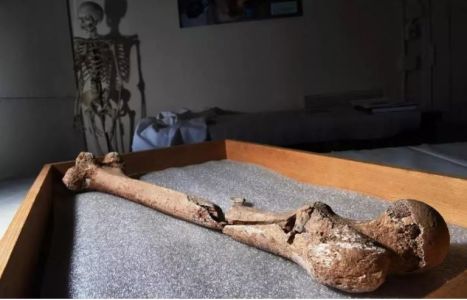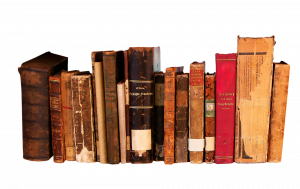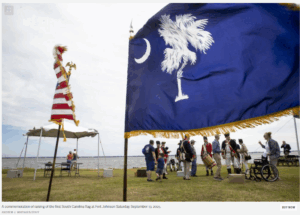
A femur, which was found in a Civil War-era limb pit on the grounds of the Manassas National Battlefield Park in Virginia, was displayed at the Smithsonian National Museum of Natural History in Washington, D.C.
WASHINGTON — The bones of two Union soldiers killed at the Civil War’s Second Battle of Bull Run will be laid to rest in Arlington National Cemetery on Sept. 6, the cemetery said Monday.
The men will be the first burials in the cemetery’s new 27-acre section and will be accorded a military funeral with honors and escort, spokeswoman Kerry Meeker, said in an e-mail.
The National Park Service has said the two men, who were found in a burial or ‘‘limb pit’’ on the battlefield, were Northern soldiers. But they have yet to be identified and will be buried as unknowns, Meeker said.
Evidence of the pit, which contained the two skeletons and amputated limbs of 11 other individuals, was discovered in 2014 during excavation for a utility line. But it was not fully examined until 2015, the Park Service said.
Officials revealed details of the find in June, calling it a one-of-a-kind discovery.
The battle is also known as the Battle of Second Manassas, for the railroad junction then near the battlefield. It was at that point the largest battle in the Western Hemisphere, the Park Service has said, involving almost 125,000 combatants.
It was fought Aug. 28 through Aug. 30, 1862, over much of the same ground as the First Battle of Bull Run a year before.
Roughly 1,700 Union soldiers and 1,200 Confederates were killed and a combined total of more than 14,000 were wounded.
The bodies of the two soldiers — known only as Burial 1 and Burial 2 — were placed side by side in the pit, which was probably located near a field hospital where they died.
Burial 1 still had the Confederate bullet that killed him buried in his broken right-thigh bone. Burial 2 was laid to rest in his Union army coat — its four eagle-imprinted buttons were found with him. He had been hit at least three times.
The severed limbs, from battlefield amputations, were carefully arranged next to them. The Park Service has said it is still deciding what to do with them.
The bones were taken to the Smithsonian Institution’s National Museum of Natural History for study, and the skeletons were later turned over to the Army, which operates the cemetery.



